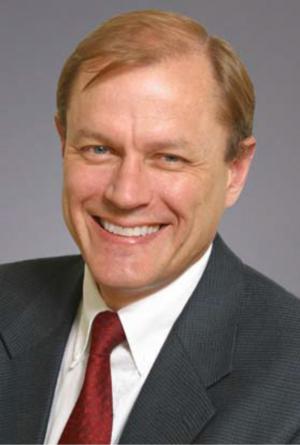Closure of a Perfectly Decent Nuclear Power Plant
Steve Huntoon is the principal of Energy Counsel, LLP. Mr. Huntoon is a former president of the Energy Bar Association, and for over 30 years of practice in energy regulatory law he has advised and represented such companies and institutions as Dynegy, PECO Energy (now part of Exelon), Florida Power & Light (NextEra Energy), ISO New England, Entergy, PacifiCorp, Williston Basin (MDU Resources) and Conectiv (now part of PHI, and Exelon).
Diablo Canyon. Memo to utility naming department: Do not name a nuclear plant after the devil. Even in a foreign language.

There's a perfectly nice beach nearby. So this could have been the Avila Beach Power Plant.
Or perhaps a patriotic name like the Admiral Rickover Power Plant. This would remind folks that tens of thousands of our Navy's finest do their work alongside a hundred nuclear reactors every day.
But it's too late now. It seems we'll be witnessing the closure of a perfectly decent nuclear power plant.
Ironically, via a deal negotiated in secret by environmental groups with Pacific Gas and Electric, the utility owner of the plant.
 “How does this study turn 'more expensive by $15 billion' into less expensive? Well, they overstate Diablo Canyon costs at the get-go. And they inflate from there.” — Steve Huntoon
“How does this study turn 'more expensive by $15 billion' into less expensive? Well, they overstate Diablo Canyon costs at the get-go. And they inflate from there.” — Steve Huntoon
Ironic because whatever else one might think about nuclear plants, especially building new ones, there's no denying that nuclear plants do not generate global warming gases.
The penultimate nuclear plant in California, the euphoniously named SONGS, shut down in 2012. Carbon dioxide emissions dramatically increased from natural gas plants compensating for the closure.
This time, supposedly, will be different. All of Diablo Canyon's 18,000 gigawatt-hours per year, 9 percent of California's total electric supply, is going to be replaced with other zero-carbon resources and reduced usage.
At least that's the plan. Except there is no plan.
PG&E is supposed to produce a specific plan by the end of the year. But the PG&E guy in charge of developing the specific plan says that if he tried to be specific about what fills the gap "... that's actually a losing strategy."
So the winning strategy is not having a plan? Let's call that The Dude Strategy.
And even the end-of-year plan from PG&E won't be The Plan. Because the deal says "... the full solution will emerge over the 2024-2045 period, in consultation with many parties."
That's reassuring. The Plan will start emerging 8 years from now. And keep emerging for 21 years thereafter.
Here's more reassurance: "The challenges associated with resource integration, and system and local reliability, will be reviewed and resolved by the [California Public Utility Commission]." Sort of like the Brexiteers handing off the shovels now that the hole is being dug.
The agreeing parties don't have a plan, and are punting responsibility for The Plan. But they are certain about one thing: Closing Diablo Canyon will be less expensive than keeping it open. But how can anyone compare the cost of Plan A with Plan B without knowing what Plan B is?
The folks at Bloomberg did a back of the envelope calculation assuming that Diablo Canyon generation is replaced with solar generation at current prices. They estimate that replacing Diablo Canyon with solar will be more expensive by $15 billion.
But somehow the agreeing parties contend the opposite. They don't have a plan. But they do have a study.
Ah, yes, a study. So how does this study turn more expensive by $15 billion into less expensive?
Well, they overstate Diablo Canyon costs at the get-go. And they inflate from there.
The study projects the cost of Diablo Canyon generation at $69-72 per megawatt-hour. The average cost of multi-unit nuclear generation is reported by the Electric Utility Cost Group to be $34 per megawatt-hour.
So the study somehow doubles the cost of nuclear generation relative to current costs. And it ignores the industry goal to reduce current costs by 30 percent in the future.
In contrast, all renewable energy costs are projected to decrease. They will achieve the "Sun Shot" target for solar, and a 30 percent "Wind Vision" cost reduction for wind, despite wind already being a mature technology.
Extension of the renewable Investment Tax Credit or the equivalent is assumed. The tax subsidy is implicitly considered free.
A new transmission line to bring Wyoming wind to California is assumed (like that can opener on a desert island), without any cost information. The $350 million payoff to labor for going along is not included.
And then, just to make sure, an extra $1-3 billion is added to Diablo Canyon at the end of the study, for "unexpected" capital costs.1 As if vast new solar, wind, storage and transmission projects can't have "unexpected" capital costs.2
And here's a doozy of a boo-boo: The study says that California has to maintain spinning reserve of 2,240 megawatts as backup for Diablo Canyon's 2,240 megawatts tripping off. The study assumes that what it calls "Maximum System Single Contingency" is the entire Diablo Canyon plant.
Actually the correct term is "Most Severe Single Contingency." And that contingency is one of the two Diablo Canyon units, at 1,150 megawatts each.3
This is important because the study assumes that retiring Diablo Canyon will relieve other resources from having to provide 2,240 megawatts of spinning reserve. And the study assumes those resources will become available to provide capacity to back-up renewable resources like solar and wind.
No such luck. Retiring Diablo Canyon means the dead weight loss of 2,240 megawatts of capacity.
Pumped storage to replace Diablo Canyon would cost $4,251,520,000 using the $1,898 per kilowatt cost of pumped storage in the study. This would be $5,552,485,000 in life cycle costs over the study period.4
We can be pretty sure that California is going to have to replace that Diablo Canyon capacity. California already is in a precarious situation for generation resources necessary to maintain reliability.
The Western Electric Coordinating Council pegs the California region with a cushion of 5,475 megawatts this year (this cushion is the net of resources over peak demand and reserve margin). But total resources include 6,258 megawatts of solar and wind resources that are unlikely to be generating much at the Duck Curve system peak at 5 p.m. and later.
Gas-fired generation has begun to retire. The explosion in solar generation, due to net metering, tax subsidies and irrational retail rate structures, is making these plants uneconomic.5
And retirements will accelerate due to California's once-through cooling regulations that kick in 2017 and 2020. The 2015 market issues report of the California ISO says that there is 15,000 megawatts of older gas-fired generation at risk.
Then there will be those millions of electric vehicles that will be plugging in at the end of the workday, i.e., 5 p.m. and later.6
And did I forget that other canyon, Aliso Canyon? Rolling blackouts are already happening.
Here's a closing shot at the agreeing parties' indictment of nuclear plants as providing inflexible generation. Solar and wind plants have many redeeming qualities. But they are the ultimate in inflexible.
Environmental groups claim that a nuclear plant running 24/7 may occasionally contribute to solar generation being curtailed per the dreaded Duck Curve.7 There are a zillion ways of dealing with that.8
Prematurely closing a nuclear plant because of the inflexibility of solar and wind generation is like going after a fly with a sledgehammer.
Not that the higher costs and reliability risks of closing Diablo Canyon actually matter. The political decision has been made, and the regulatory proceeding looks to be kabuki theatre. The important take-away for other states is to not assume that this is a merits-based outcome.
Us older folks remember when California experienced a huge energy crisis after not adding generation to meet increasing demand in the 1990s. This could be déjà vu all over again.
But this time it won't be Enron's fault.
Endnotes:
1. That's on top of an assumed $4.1 billion cost for unspecified "capital additions."
2. This may help answer the question: What's in this for PG&E? Hmm. Diablo Canyon will be fully depreciated at the end of its initial license term. So just when customers will have paid off Diablo Canyon, PG&E will stop making money on it. And part of the deal is a Renewable Portfolio Standard for PG&E even greater than the California state-wide requirement. That means even more renewable energy. This in turn means, as discussed on PG&E's second quarter earnings call on July 28, 2016, even more utility investment (i.e., rate base) for transmission and distribution upgrades to accommodate that renewable energy.
3. "Currently, the ISO MSSC is the loss of one Diablo Unit." California ISO to California Public Utility Commission, Rulemaking 11-10-023, page 9.
4. Here's a cautionary note on that $1,898 per kilowatt cost assumption for pumped storage. Sacramento Municipal Utility District two years ago began feasibility work on an Iowa Hill pumped storage project expected to cost $2,000 per kilowatt. The real number turned up earlier this year at $3,625 per kilowatt. The project was cancelled "due to cost and financial risks." So the real life cycle costs to replace Diablo Canyon capacity may be more like $10 billion. And that's additive to Bloomberg's $15 billion in excess energy costs.
5. Calpine is mothballing its 525 megawatt Sutter Energy Center. And La Paloma Generating Company has told FERC that it is on the verge of retiring its 1,000 megawatt plant due to inadequate revenue caused by the explosion in solar generation. The California ISO responded that La Paloma agreed to the rules of a "competitive market." Whatever the California electric industry has become with its layers of out-of-market interventions, a competitive market is not it.
6. The parties claim that PG&E sales could decrease 30-60 percent in coming decades from various factors like energy efficiency, squeezing out any value of Diablo Canyon. That is a fantasy. The Western Electricity Coordinating Council, responsible for preserving reliability in the western U.S., projects increasing peak demand in California through the year 2025. NERC 2015 Long-Term Reliability Assessment, page 78. Any reduction in annual utility sales due to energy efficiency and distributed energy resources is projected by the California ISO and the California Energy Commission to be negligible. California ISO Senate Bill 350 Study, July 8, 2016, page V-11.
7. Of course, blaming a nuclear plant for curtailment of solar resources is itself misleading. All inflexible resources collectively contribute to any excess generation. The vast bulk of inflexible resources is solar itself.
8. The Regulatory Assistance Project identified ten strategies for dealing with the Duck Curve. "Teaching the 'Duck' to Fly" is available online at www.raponline.org. And I discussed a number of strategies in my April 2016 Public Utilities Fortnightly column, "Just Ducky." It also should be noted that nuclear units have some operating flexibility, as discussed in Commentary number 12, "Nuclear Flexibility," available online at www.nuclear-economics.com. And there is always the no-brainer option of exporting any excess generation.
9. Here I'm talking about entities like the Rocky Mountain Institute and the Natural Resources Defense Council. They are promoting the closure as proof that even well-run nuclear plants don't make economic sense.




